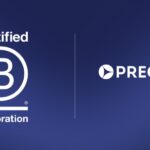A smooth checkout process can often influence whether a visitor completes a purchase or abandons the cart. Many businesses face challenges in this area, but e-commerce development companies specialize in addressing the barriers that cause hesitation. They work to enhance conversions by simplifying checkout flows, offering flexible payment options, and building trust through secure and user-friendly design.
These companies do more than just adjust layouts or shorten forms. They study customer behavior, identify potential points of friction, and apply strategies that have been effective in guiding shoppers toward completing their purchases. As a result, businesses may experience fewer abandoned carts and, in many cases, more consistent sales growth.
Beyond basic improvements, development teams may also introduce advanced features such as mobile-first checkout, guest account options, and smart integrations with digital wallets. Each adjustment aims to create a smoother path to purchase, equipping businesses with the tools they need to compete in a crowded online marketplace.
Key Strategies E-commerce Development Companies Use to Optimize Checkout
E-commerce development companies focus on reducing checkout friction, making payments more convenient, and building customer trust. Their strategies address the main reasons shoppers abandon carts, including complicated forms, limited payment options, and security concerns.
Simplifying the Checkout Process for Fewer Abandonments
A long or confusing checkout often drives shoppers away. Development teams work to shorten the path to purchase by removing unnecessary steps and fields. For example, instead of asking for repeated information, they design forms that auto-fill details or allow quick edits.
They also use a single-page checkout layout to reduce clicks. This approach aims to keep the process clear and direct, which can lower abandonment rates. Progress indicators guide customers through each step, helping them understand how close they are to completing the order.
Clear calls-to-action, minimal distractions, and a simple cart summary further reduce hesitation. Businesses that collaborate with specialists listed in an e-commerce development companies’ review often experience faster checkouts and potentially higher conversions due to these streamlined designs.
Enabling Guest Checkout and Streamlined Account Creation
Forcing account creation before purchase can discourage buyers. To avoid this, development companies may set up guest checkout options, allowing customers to complete transactions without registration. This approach removes a common barrier and makes the checkout feel more welcoming.
At the same time, they make account creation simple for those who prefer it. Instead of long forms, they may offer one-click registration using email or social logins. Customers can also be invited to create an account after purchase, which may feel less intrusive.
By balancing guest checkout with easy account setup, businesses keep the process flexible. This strategy has been shown to increase completed orders while still giving customers the option to save details for future purchases.
Integrating Multiple Payment Methods and Digital Wallets
Shoppers typically prefer to pay in the way that suits them ideally. Development companies integrate a wide range of payment options, from traditional credit cards to newer choices like PayPal, Apple Pay, and Google Pay. Offering digital wallets can speed up checkout and help reduce typing errors.
For international sales, support for multiple currencies and local payment methods is often necessary. Customers are more likely to complete purchases if they see familiar and convenient payment options.
Additionally, developers may add one-click payment features for returning customers. This level of convenience can help reduce cart abandonment and encourage repeat business.
Improving Trust with Security Badges and SSL Certificates
Security plays a significant role in whether a customer completes a purchase. Development companies help protect checkout pages with SSL certificates to encrypt data. This visible layer of security reassures buyers that their payment details are safe.
They may also display trust badges from recognized providers. These symbols act as signals that the website takes security seriously. Customers often look for these trust signals before entering credit card information.
In addition, clear privacy policies, return information, and customer support links further build confidence. By combining technical safeguards with visible trust signals, businesses can reduce hesitation and increase completed transactions.
Advanced Techniques for Maximizing Checkout Conversions
Improving checkout performance often requires attention to user experience, trust signals, and ongoing optimization. Businesses that apply structured testing, mobile design principles, and clear customer support typically see higher completion rates and improved customer satisfaction.
Optimizing for Mobile and Responsive Design
A large share of online purchases now occurs on mobile devices, so checkout design must adapt smoothly to different screen sizes. Responsive design ensures forms, buttons, and progress indicators remain easy to use on both small and large displays.
Fast load times are also essential. Compressing images, reducing unnecessary scripts, and simplifying layouts can help reduce delays that often lead to cart abandonment. A progress bar or step indicator can guide users through checkout and reduce confusion.
Clear, large input fields and mobile-friendly payment methods such as digital wallets improve checkout UX. By focusing on mobile usability, businesses can reduce friction and encourage more visitors to finish their purchases.
Implementing A/B Testing and Continuous Improvement
A/B testing allows businesses to compare two versions of a checkout element, such as button placement, progress indicators, or the layout of a single-page checkout. Results reveal which version may lead to higher conversion rates.
Testing should not stop after one experiment. Continuous improvement means tracking performance data, identifying weak points, and updating the design regularly. For example, testing different error message styles can show which format helps customers correct mistakes more quickly.
Exit-intent popups can also be tested to determine whether they help reduce cart abandonment rates by offering a discount or reminding users of free shipping. Over time, these small adjustments can potentially raise conversion rates and average order values.
Leveraging Psychological Triggers and Social Proof
Psychological triggers can influence how customers make purchase decisions. Limited-time offers, free shipping thresholds, or highlighting low stock levels can encourage users to complete checkout faster.
Social proof also plays a strong role. Displaying customer reviews, ratings, or testimonials near the payment section can help build trust. Even small signals, such as showing how many people purchased the same product recently, can reduce hesitation.
Cross-selling during checkout should be subtle. Offering one or two relevant add-ons may increase average order value without distracting customers from completing payment. The key is to use these triggers carefully so they support conversions rather than overwhelm the buyer.
Supporting Customers with Live Chat and Clear Return Policies
Customers may abandon checkout if they feel uncertain about a purchase. Live chat support provides an immediate way to answer questions about shipping, payment options, or product details. A visible chat button placed on the checkout page may reduce frustration and help keep users from leaving.
Clear return policies also build trust. Displaying a short summary of return terms during checkout reassures buyers that they can shop with confidence. This transparency can increase customer satisfaction and lower hesitation at the final step.
Together, live chat and straightforward return information can reduce barriers that often lead to abandoned carts, contributing to smoother checkout experiences and higher conversions.
Summary
E-commerce development companies help businesses improve checkout by removing friction and creating a smoother path to purchase. They simplify forms, reduce extra steps, and make payment options more accessible.
They also focus on mobile-friendly design, guest checkout, and visible trust signals, which can directly reduce cart abandonment. Each adjustment supports a faster and more confident buying process.
As a result, businesses may experience higher conversion rates, stronger customer satisfaction, and more completed sales. By refining checkout flow, they can turn more visitors into paying customers.
Disclaimer: The information provided in this article is for general informational purposes only. Results from e-commerce optimization strategies can vary depending on individual business circumstances and other factors. There is no guarantee that applying these strategies will result in higher conversions for all businesses.

















